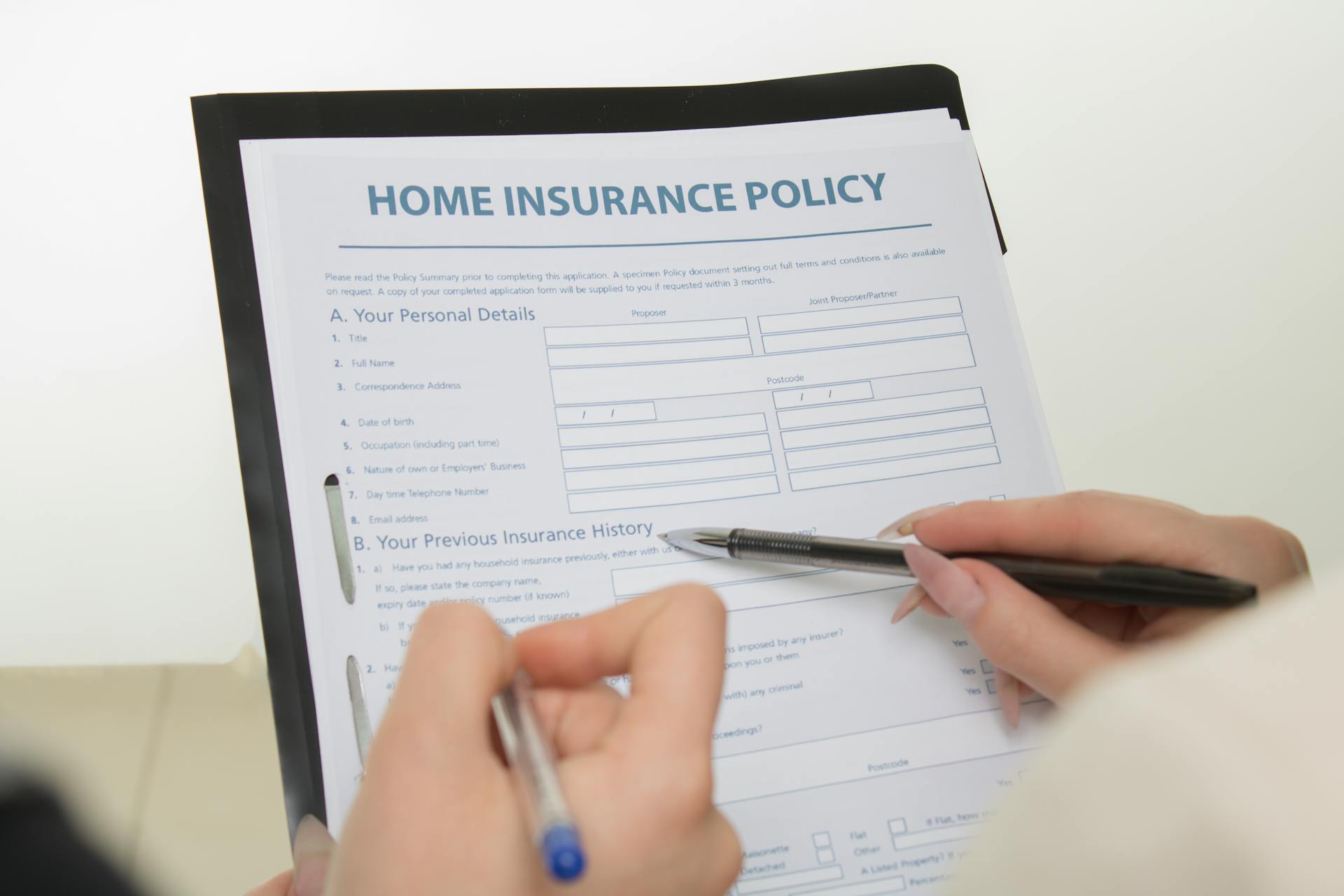
Fannie Mae requires hazard insurance to protect against damage to a property, but the type of insurance needed varies depending on the location.
In areas prone to natural disasters like earthquakes, flood, or hurricane zones, lenders must require additional insurance coverage.
Fannie Mae allows lenders to use their own hazard insurance requirements, but they must ensure the insurance meets the minimum standards set by the government-sponsored enterprise.
The minimum coverage amount for hazard insurance is typically 100% of the outstanding mortgage balance, but this can vary depending on the property's location and value.
Recommended read: Fannie Mae Condo Master Insurance Requirements
Overview
As a homeowner, you have the freedom to choose your own property insurance provider, as long as the policy meets Fannie Mae's requirements.
The lender or servicer is responsible for ensuring that the insurer, policy, and coverage meet these requirements, and they must do so for the entire duration of the loan.
You can select any insurer you like, but be aware that Fannie Mae may require additional coverage that differs from the standard requirements in some cases.
The lender or servicer includes both the lender at origination and the servicer during the loan servicing period.
A different take: Bond Insurer
Coverage Requirements

Fannie Mae has specific requirements for property insurance coverage to ensure that properties securing loans are adequately protected.
The coverage must include protection against loss or damage from fire and other hazards covered by the standard extended coverage endorsement.
Extended coverage must provide for claims to be settled on a replacement cost basis and include, at a minimum, wind, hurricane, civil commotion (including riots), smoke, hail, and damages caused by aircraft, vehicle, or explosion.
Typhoon coverage is required for security properties located in Guam.
Fannie Mae does not accept property insurance policies that limit or exclude from coverage windstorm, hurricane, hail damages, or any other perils that normally are included under an extended coverage endorsement.
Here's a breakdown of the required coverage amounts for first-lien mortgages:
If the unpaid principal balance of the mortgage does not meet the minimum amount required to compensate for damage or loss on a replacement cost basis, then coverage that provides the minimum required amount must be obtained.
For more insights, see: Motor Carrier Act of 1980 Minimum Insurance Requirements
Exceptions and Issues

Carriers may place an endorsement on older roofs that would limit the replacement of the roof to Actual Cash Value, which is no longer acceptable to mortgage companies.
Condominiums with older roofs should consider the option of roof replacement to be compliant with the new regulations.
Policies that limit, depreciate, reduce or otherwise settle losses at anything other than a replacement cost basis are not acceptable.
Lenders should advise borrowers that they may not obtain property insurance policies that include such limitations or exclusions, unless they are able to obtain a separate policy or endorsement from another commercial insurer that provides adequate coverage for the limited or excluded peril or from an insurance pool that the state has established to cover the limitations or exclusions.
For a first-lien mortgage secured by a property on which an individually held insurance policy is maintained, Fannie Mae requires coverage equal to the lesser of two amounts:
- 100% of the insurable value of the improvements, as established by the property insurer;
- the unpaid principal balance of the mortgage, as long as it at least equals the minimum amount—80% of the insurable value of the improvements—required to compensate for damage or loss on a replacement cost basis.
Exceptions to Property Insurance Requirements

Exceptions to Property Insurance Requirements can be a bit tricky, but don't worry, I've got the lowdown.
Fannie Mae is flexible when it comes to property insurance policies, and they accept certain types of policies if they're the only coverage available at the time of the loan closing or policy renewal.
These include policies obtained through state or territory insurance plans, such as a state's Fair Access to Insurance Requirements (FAIR) plan.
Other state-mandated windstorm and beach erosion insurance pools are also accepted.
Consider reading: Commercial Auto Insurance Requirements by State
The Issues
The Issues can be a major concern when it comes to property insurance. Property insurance policies that don't provide for claims to be settled on a replacement cost basis are not acceptable.
Carriers may place an endorsement on older roofs that would limit the replacement of the roof to Actual Cash Value, which is no longer acceptable to mortgage companies. Condominiums with older roofs should consider the option of roof replacement to be compliant with the new regulations.
Suggestion: Hazard Insurance for Rental Property

The lender or servicer must verify that the property insurance coverage amount is at least equal to 100% of the replacement cost value of the project improvements, including common elements and residential structures, as of the current property insurance policy effective date. This is a crucial requirement to ensure compliance with the new regulations.
Additional reading: Florida Required Insurance Bodily Injury Property Damage
Sources
- https://www.atkinsoninsurancegroup.com/faq/fannie-mae-requirements-general-property-insurance-coverage/
- https://selling-guide.fanniemae.com/sel/b7-3-01/general-property-insurance-requirements-all-property-types
- https://www.insurancejournal.com/news/southeast/2024/05/07/773103.htm
- https://deeleyinsurance.com/fannie-mae-loan-requirements/
- https://www.nationalmortgagenews.com/news/fannie-mae-freddie-mac-press-pause-on-insurance-requirement
Featured Images: pexels.com


